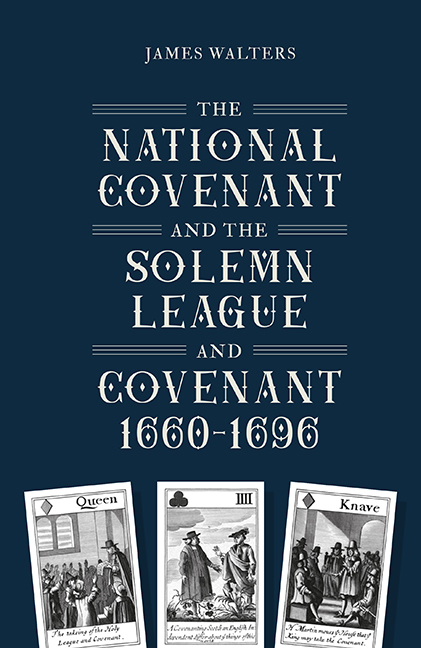Book contents
- Frontmatter
- Contentst
- List of Illustrations
- Acknowledgements
- Introduction
- 1 The 1638 National Covenant and the 1643 Solemn League and Covenant
- 2 1660: What Was to Be Restored?
- 3 The Act of Uniformity and the ‘Great Ejection’
- 4 Crisis and Toleration in the 1660s
- 5 Exclusion and Association in the Late Restoration Period
- 6 The Revolution of 1688 and the Association of 1696
- Conclusion
- Bibliography
- Index
- STUDIES IN EARLY MODERN CULTURAL, POLITICAL AND SOCIAL HISTORY
5 - Exclusion and Association in the Late Restoration Period
Published online by Cambridge University Press: 26 May 2022
- Frontmatter
- Contentst
- List of Illustrations
- Acknowledgements
- Introduction
- 1 The 1638 National Covenant and the 1643 Solemn League and Covenant
- 2 1660: What Was to Be Restored?
- 3 The Act of Uniformity and the ‘Great Ejection’
- 4 Crisis and Toleration in the 1660s
- 5 Exclusion and Association in the Late Restoration Period
- 6 The Revolution of 1688 and the Association of 1696
- Conclusion
- Bibliography
- Index
- STUDIES IN EARLY MODERN CULTURAL, POLITICAL AND SOCIAL HISTORY
Summary
The late Restoration period is one in which old political identities began to be redefined, and the concept of competing ‘parties’, in the form of the Whigs and the Tories, first started to emerge. The concept of the ‘association’, as both a social and political grouping, and in some cases as an actual statement or subscription which defined these groups, also emerged as a prominent feature of public life. While these groups were new, the ideas which underpinned them were influenced by prior political and intellectual traditions, including the Solemn League and Covenant and the discourse which accompanied it. Mark Goldie has argued that the 1670s marked the start of a period in which presbyterian political theory became deeply entangled with the interests of what previously would have been termed puritans, to dominate the philosophy of the emerging Whig political faction. The ecclesiastical demands of Scottish presbyterianism and the Solemn League and Covenant, he argued, remained relatively marginalised in England. However, their political implications – of a limited monarchy more restrained by parliament than in conceptions traditionally favoured by the Stuarts – came to dominate the thinking of the king's opponents. The political influence of the ‘hotter’ puritanism had waned considerably due to its association with regicide, and therefore, argued Goldie, puritan religious sensibilities instead became more closely associated with the politics of the presbyterians. Though many self-proclaimed presbyterians by the 1670s did not necessarily demand the rejection of episcopacy, they presented themselves as part of a perceived presbyterian tradition. This was royalist rather than republican, but also characterised by resistance to monarchical or ministerial tyranny.
As Gary S. De Krey has phrased it, ‘the Restoration polity was inherently unstable’. The post-Restoration settlement had arguably failed, both to address the question of a stable relationship between church, state, and nonconformity, and to adequately settle the boundaries of royal and parliamentary authority in England and Scotland. While in some respects the legislation introduced in the 1660s to produce stability achieved some of its aims, as the previous chapters have argued, many constitutional and individual issues were left unresolved. Many presbyterians in particular were caught in a confused and contradictory position by the incomplete and unstable nature of the Restoration settlement.
- Type
- Chapter
- Information
- Publisher: Boydell & BrewerPrint publication year: 2022

